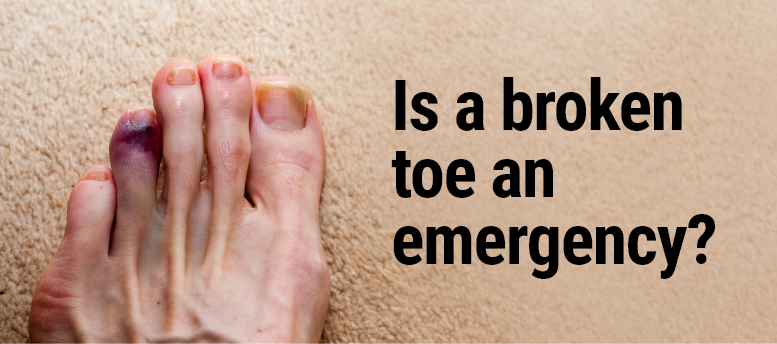Toenail infections are common in individuals with weak immunity or diabetes. That said, anyone can get an infected toenail if their feet come into contact with bacteria or fungi through an ingrown nail or wound. In any case, it requires a trip to an emergency podiatrist for proper treatment.
What does an infected toenail look like?
An infection can be minor at first, then gradually worsen and cause symptoms like changes in skin color, redness, a bad smell, oozing, and swelling. You might also notice signs like pressure, the site feeling hot to the touch, a visible break in your skin, and pain at the onset of infection.
If you develop a fever, that’s a sure sign to visit a Thousand Oaks foot doctor. That said, don’t wait until the infection worsens to the point that it makes you sick. Seek urgent care for foot injury at the first signs of infection.
Why is my toenail infected?
Many incidents can lead to an infected toenail, including cutting the nail too short or accidentally cutting a cuticle. An ingrown toenail can also cause an infection, especially when it grows into the skin and you fail to treat it promptly.
Walking barefoot in common areas like the locker room or gym shower could make you susceptible to getting a fungal infection, which can affect your toenails. Some toenail infections are due to other medical conditions such as diabetes. People whose toenails naturally grow downward are also at risk.
Feet yeast infection may likewise cause problems for your toenail. The symptoms include red and tender skin around the nails, with the possibility of developing pus-filled blisters.
Poor hygiene is another culprit. Dirty feet and constant exposure to moisture and sweat for extended periods can help fungus and bacteria grow.
What can I do if my toenail is infected?
Only a Thousand Oaks foot doctor can address toenail infections effectively and promptly. Antibiotics and antifungal medications with preventive strategies or lifestyle changes can help treat the infection and prevent it from returning.
Immediate treatment is also necessary if you want your infected toenail to get well sooner and prevent further complications. So, check your toes a few times each week to watch out for signs of infection and abnormalities, and inspect them daily if you have diabetes. Book an appointment with a podiatrist for urgent care for foot injury if you notice anything wrong.
Medical treatment for infected toenails
An emergency podiatrist will assess the type of infection you have and prescribe oral and topical antibiotics or antifungals. Some cases may require surgery to drain the pus and deal with the infection more effectively. This is usually recommended for severe ingrown toenails.
Home treatment
A Thousand Oaks foot doctor will prescribe the best treatment for your infection but ask about doing home remedies. They may recommend using antifungal creams or sprays you can buy from a local pharmacy or prescribe special padded socks to minimize moisture on your feet.
Soaking the foot with an infected toenail may help ease pain and swelling and kill the bacteria and fungus. Try warm water with apple cider vinegar or castile soap and Epsom salts for 20 minutes. Dry your foot thoroughly after the soak.
Should you see a doctor?
Seek urgent care for foot injury from a podiatrist when home remedies and over-the-counter medications are not working. If you have a weak immune system or diabetes, it’s best to visit an emergency podiatrist immediately instead of self-medicating.
Visit Urgent Care For Feet instead of going to the ER or standard urgent care. We have board-certified podiatrists and well-equipped clinics to provide immediate treatment for any infection at a more reasonable cost.




